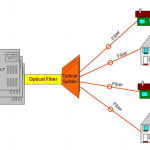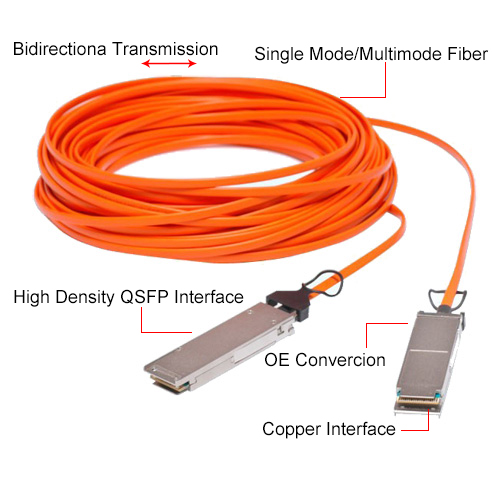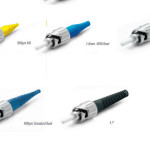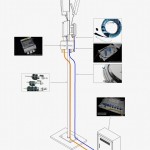Cable technology is commonly called “hybrid fiber coaxial” or HFC. This is because most cable systems consist of fiber connections from the operator’s headend or hub facility (the cable counterpart of the telephone central office) to an optical “node” near the customer premises, and thereafter comprise coaxial cable to the premises.
Cable operators have extended fiber optics progressively closer to their subscribers but have generally stopped at nodes about one mile from the premises. Comcast, for example, typically only constructs fiber optics to the premises of businesses that subscribe to Metro Ethernet and other advanced services (i.e., generally for symmetrical services faster than 50 Mbps).
Advances in HFC networks and technologies and the emergence of fiber-to-the-premises (FTTP) networks are a consequence of the attempts by service providers to deliver high quality, high-bandwidth service offerings to their customers. In many respects, the differences between these networks relate to the geographic scale of their components rather than fundamentally different technologies or approaches to service delivery.
Both HFC and FTTP networks use optical fibers as the primary physical medium to carry communication signals. Additionally, both HFC and FTTP networks leverage some degree of copper or coaxial cabling for connecting devices such as television set-top boxes, computers, routers, and telephones at the customer premises. Both types of networks can carry broadcast analog or digital video signals, provide telephone services with guaranteed availability of network capacity to ensure quality of service (QoS), and deliver Internet and data connections using standards-based Ethernet interfaces to the customers’ equipment.
The most significant distinction between these networks is how closely fiber carries the connection to individual subscribers. A conversion to copper wiring occurs within the “last mile” between a provider and a customer for all HFC networks, while FTTP networks make this conversion at the customer premises.
In the case of an HFC network, headend or hub locations house the core transmission equipment and components necessary for the various service offerings. Fiber optic connections extend from these hubs to multiple nodes, each of which serves a given geographical area (e.g., a neighborhood). These optical nodes are electronic devices located outdoors, attached to aerial utility lines or placed in pedestals. The equipment in the node converts the optical signals carried on fiber into electronic signals carried over coaxial (coax) cables. From this point onward, coax cable carries the video, data, and telephony services to individual customer locations (Figure 1).
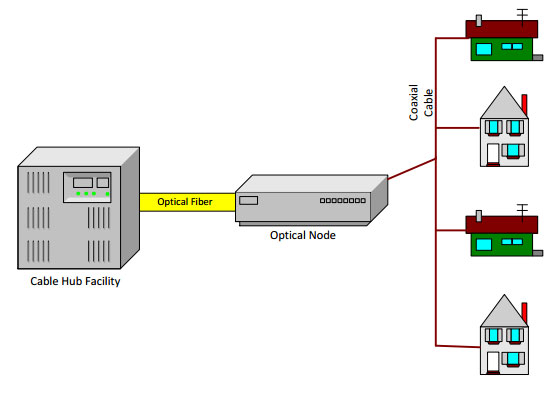
The current leading cable technology for broadband data, known as data over cable service interface specifications version 3.0 (DOCSIS 3.0), makes it possible for cable operators to increase capacity relative to earlier cable technologies by bonding multiple channels together (Figure 2). The DOCSIS 3.0 standard requires that cable modems bond at least four channels, for connection speeds of up to 200 Mbps downstream and 108 Mbps upstream (assuming use of four channels in each direction). A cable operator can carry more capacity by bonding more channels.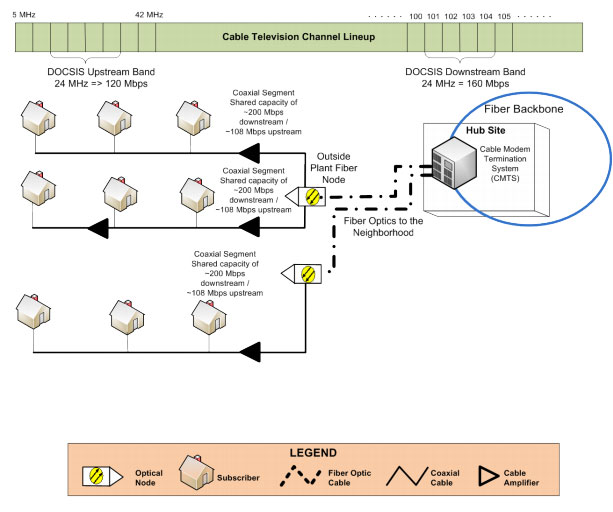
It is critical to note that these are peak speeds, and that the capacity is shared by all customers typically hundreds of homes or businesses—on a particular segment of coaxial cable; this is. Speeds may decrease during bandwidth “rush hours” when more users simultaneously use greater amounts of bandwidth. For example, residential bandwidth use typically goes up considerably during evening hours, when more people use streaming video services and other large data applications.
Ultimately, the maximum speed over an HFC network is limited by the physics of the cable plant; the coaxial connection to the customer is generally limited to less than 1 GHz of usable spectrum in total.
